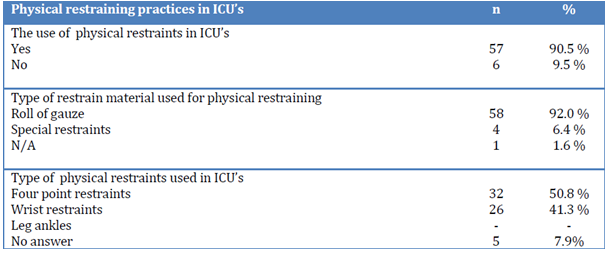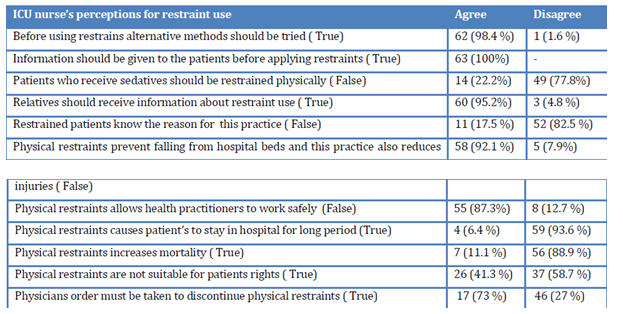Though the use of physical restraints in acute and intensive care units is predetermined with the objective factors and working necessity, the complications resulting from the implementation of the method question its effectiveness and appropriateness. The issue of using physical restraints in health care institutions is a rather debatable topic, and some experts consider it as a necessity for managing some patients, while others oppose it, emphasizing the negative consequences of restraining the patients.
The problem of tragic consequences of physical restraint of the patients is generally associated with the violation of the health care norm concerning the time limits during which a restrained patient can stay unobserved. Considering the fact that the majority of registered cases of the negative effects of the physical restraint in most cases occur after the restrained patients stay unobserved for several hours or even days, the offered solution for the problem is the training programs for the nursing staff.
Creating the awareness of the personnel on the appropriate health care norms and improving their professional skills would decrease the rate of the negative effects of using physical restraint in acute and intensive care units. Comparing the number of self-inflicted injuries in restrained patients to the injuries in non-restrained and reviewing the existing literature on the positive and negative consequences of the restraints is important for evaluating the possible risks of choosing one of the approaches and minimizing the risks for the patients and medical workers.
For the purpose of minimizing the risks of self-inflicted injuries and other complications caused by the use of physical restraint, nurses should continually observe and monitor the restrained patients. On the other hand, the lack of proficiency of the nursing staff is not the only precondition of the negative effects of the use of physical restraint in acute care units. Understaffing and an enormous workload can result in inadequate use of the physical restraints methods.
Demur (2007) carried out a study, providing support for the reduction of the use of physical restraints, showing that instead of protecting patients, restraints can cause physical harm to them. Along with developing the training programs, the hospital administration should create the working conditions for the nursing staff which would allow using alternative ways of managing the agitated and problem patients. The issue of low nurse-patient ratio should be considered for handling the problem of the negative effects of the physical restraint on the physical and emotional health of the patients.
The theory of reasoned action should be implemented by the nursing staff for the appropriate use of the physical restraint methods only in cases when it is of crucial importance for the purpose of minimizing the risk of overuse of the power which can be associated with the violence. In the frames of the evidence-based practice, this approach is the most effective for reviewing the latest researches and utilizing the latest achievements in the sphere for the benefit of the patients and the nursing staff.
People should not be put through affliction or undignified treatment (Kielb, Hurlock-Chorostecki & Sipprell, 2005). It is important to implement the theory of reasoned action for the analysis of every individual case and choose the appropriate ways for managing patients for decreasing the risks of their self-inflicted injuries and preventing the traumatizing of the medical staff.
The development of the training programs for the nursing staff and handling the problem of the low nurse-patient ratio is important for minimizing the risks of negative effects of the use of physical restraint in acute and intensive care units.


References
Demir, A. (2007). Nurses’ use of physical restraints in four Turkish hospitals. Journal of Nursing Scholarship, 39(1), 38-45.
Kielb, C., Hurlock-Chorostecki, C., & Sipprell, D. (2005). Can minimal patient restraint be safely implemented in the intensive care unit? Canadian Association of Critical Care Nurses, 16(1), 16-19.